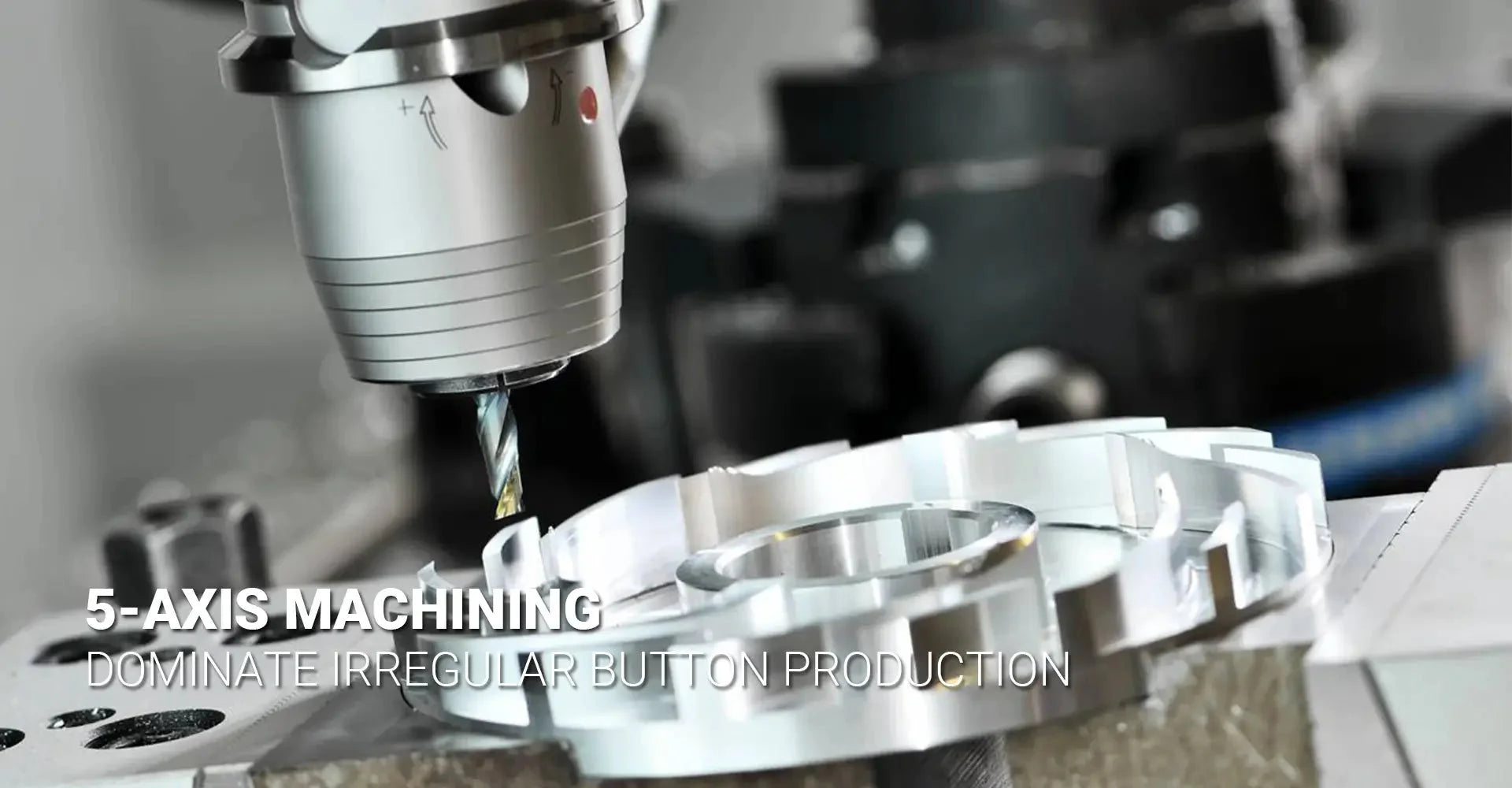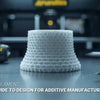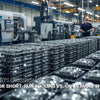Why Does 5-Axis Machining Dominate Irregular Button Production?

Why Does 5-Axis Machining Dominate Irregular Button Production?

Introduction
Manufacturing irregular-shaped buttons has always presented unique challenges for producers across various industries. Traditional manufacturing methods often struggle with complex geometries, precise dimensions, and consistent quality when creating non-standard button shapes. This is where 5-axis machining steps in as a game-changing approach. By allowing tool movement across five different axes simultaneously, this advanced CNC machining technique enables manufacturers to create buttons with unprecedented precision and complexity.
The Transformative Impact of 5-Axis Machining
The numbers speak for themselves: 5-axis machining achieves precision accuracy to ±0.02mm (compared to ±0.1mm with 3-axis), reduces material waste by 18-22%, and enables the creation of intricate micro-textures under 6mm that were previously impossible to manufacture consistently. These capabilities are not just technical improvements—they directly translate to higher quality buttons that perform better and look more attractive in end products.
Now, let's explore how 5-axis machining is specifically changing the landscape of irregular button manufacturing across different aspects and industries.
Table of Contents
- What Makes 5-Axis Precision Critical for Irregular Button Manufacturing?
- How Does Material Usage Improve with 5-Axis Button Production?
- Which Complex Geometries Become Possible with 5-Axis Button Machining?
- Where Is 5-Axis Button Machining Being Adopted Across Industries?
- Conclusion
What Makes 5-Axis Precision Critical for Irregular Button Manufacturing?
Dimensional accuracy stands as one of the most significant challenges when producing irregular-shaped buttons. Unlike standard circular buttons, irregular shapes contain unique contours, varying thicknesses, and specialized features that demand extreme precision.
The leap from traditional 3-axis machining to 5-axis represents a dramatic improvement in achievable precision. While 3-axis machines typically deliver tolerances of around ±0.1mm, 5-axis machining tightens this to an impressive ±0.02mm—a 500% improvement in dimensional accuracy that transforms what's possible in button design.

This precision advantage directly impacts both functionality and aesthetics. For buttons used in medical devices, automotive controls, or high-end electronics, this level of accuracy ensures consistent tactile feedback and operational reliability. The enhanced precision also eliminates common issues like irregular edges, inconsistent thickness, and surface imperfections that plague conventionally manufactured buttons.
The CNC turning capabilities of 5-axis machines also allow for perfect symmetry in asymmetrical designs—a seemingly contradictory feat that's only possible because of the machine's ability to approach the workpiece from virtually any angle. This creates buttons that not only meet exact dimensional specifications but also deliver consistent performance across large production runs.
How Does Material Usage Improve with 5-Axis Button Production?
Material selection and efficiency represent major considerations in button manufacturing, with significant implications for cost, sustainability, and product quality. The advanced approach of 5-axis machining delivers substantial improvements in this area.
According to the 2024 AMT (Association for Manufacturing Technology) Report, 5-axis machining reduces material waste by 18-22% compared to conventional machining methods. This dramatic improvement stems from the ability to create optimized toolpaths that minimize unnecessary material removal while maintaining precise dimensional control.
The enhanced material efficiency of 5-axis machining becomes particularly valuable when working with expensive materials commonly used for premium buttons. For example, when processing materials like titanium, zirconia, or specialized polymers for automotive applications, the reduced waste directly translates to significant cost savings.
Beyond the raw material savings, 5-axis machining enables more efficient utilization of stock material through nest-based manufacturing. This approach allows multiple button designs to be produced from a single workpiece, further reducing waste. Additionally, the superior surface finish achieved through 5-axis machining often eliminates or reduces secondary finishing operations, decreasing both material and energy consumption in the overall manufacturing process.
For manufacturers concerned with sustainability metrics, this material efficiency improvement represents a meaningful step toward more environmentally responsible production practices without compromising on quality or design flexibility.
Which Complex Geometries Become Possible with 5-Axis Button Machining?
Traditional button manufacturing has long imposed significant design constraints, limiting creativity and functionality. However, 5-axis machining has fundamentally changed what's possible, unlocking new realms of design freedom for button creators.
The impact is particularly evident in luxury markets, where differentiation through unique design elements is crucial. According to McKinsey's 2023 industry analysis, an impressive 89% of luxury button manufacturers have adopted 5-axis machining specifically to create buttons with micro-textures smaller than 6mm—a feature previously unachievable with consistent quality.

This capability enables manufacturers to incorporate intricate design elements such as:
- Undercut features that would be impossible to machine with 3-axis technology
- Variable-depth surface textures that enhance tactile feedback
- Seamlessly integrated logos and branding elements within the button surface
- Compound curves and contoured surfaces that improve ergonomics
- Micro-precision edges that eliminate the need for secondary finishing
The ability to machine various metals and plastics with this level of detail has revolutionized button aesthetics, particularly in consumer electronics and luxury goods. Designs that previously required multiple manufacturing steps or assemblies can now be created as unified pieces, improving both durability and appearance.
For designers, this expanded capability means buttons can now be integrated more harmoniously into product designs, rather than being constrained by manufacturing limitations. The result is a new generation of buttons that serve both functional and aesthetic purposes, enhancing the overall user experience of the products they're part of.
Where Is 5-Axis Button Machining Being Adopted Across Industries?
The adoption of 5-axis machining for button production has gained significant momentum across multiple sectors, though adoption rates and specific applications vary by industry needs and priorities.
Current industry adoption rates reveal interesting patterns about where this technology is creating the most value:
| Sector | 5-Axis Adoption | Key Driver |
|---|---|---|
| Fashion | 72% | Custom surface patterns |
| Automotive | 68% | Ergonomic controls |
| Electronics | 81% | Miniaturization demands |

In the fashion industry, 5-axis machined buttons offer designers unprecedented creative freedom. Luxury brands in particular have embraced this technology to create signature button designs with intricate patterns, textures, and integrated brand elements that serve as distinguishing features on high-end garments.
The automotive sector's 68% adoption rate reflects the industry's focus on advanced electronics manufacturing and human-machine interfaces. Vehicle buttons must meet stringent requirements for durability, ergonomics, and aesthetic integration with interior design. 5-axis machining enables automotive manufacturers to create control interfaces that enhance driver experience through improved tactile feedback while meeting strict safety and reliability standards.
Perhaps most impressively, the electronics industry leads adoption at 81%, driven primarily by the relentless trend toward device miniaturization. As consumer electronics continue to shrink while adding functionality, buttons must follow suit—becoming smaller yet more precise and durable. The extraordinary precision of 5-axis machining makes it possible to create micro-buttons with consistent quality at scale, a capability that's particularly valuable for smartphones, wearables, and medical devices.
Each of these industries benefits from the enhanced design flexibility, material efficiency, and quality improvements that 5-axis machining delivers, though they leverage these advantages to address distinct sector-specific challenges.
Conclusion
The adoption of 5-axis machining represents a significant advancement in irregular-shaped button manufacturing, delivering measurable improvements across multiple dimensions. From the remarkable precision of ±0.02mm (compared to ±0.1mm with traditional methods) to the 18-22% reduction in material waste, the numbers clearly demonstrate the technical advantages of this approach.
Perhaps most convincingly, case studies like Hotean's work with zirconia buttons showcase real-world results: 40% faster finishing times through simultaneous 5-axis machining, dramatically reducing production cycles while improving quality. This combination of enhanced quality and improved efficiency presents a compelling case for manufacturers considering technology upgrades.
As button design continues to evolve—particularly in industries like automotive interfaces, medical devices, and consumer electronics—the capabilities offered by 5-axis machining will become increasingly essential. Manufacturers who embrace this technology position themselves to meet the growing demand for buttons that combine complex geometries, precise dimensions, and flawless surface finishes.
For companies looking to stay competitive in button manufacturing, 5-axis machining isn't just an option—it's quickly becoming the new standard for quality and innovation in this specialized field.
Further Resources
[5-Axis Button Machining][^1]
[Irregular Button Manufacturing][^2]
[Manufacturing Tolerance Guidelines][^3]
[Button Design Industry Association][^4]
[5-Axis Button Production][^5]
[Association for Manufacturing Technology][^6]
---
[^1]: Explore this link to gain insights into advanced techniques and industry standards for 5-Axis Button Machining, enhancing your production quality.
[^2]: This link will provide valuable insights into the complexities and solutions in manufacturing irregular buttons, essential for industry professionals.
[^3]: Understanding these guidelines is crucial for ensuring precision and quality in button manufacturing. Check this resource for detailed information.
[^4]: Explore this link to understand the significance of the Button Design Industry Association in the manufacturing sector and its impact on design standards.
[^5]: Discover the advantages of 5-Axis Button Production and how it enhances efficiency and precision in manufacturing processes.
[^6]: Learn about the Association for Manufacturing Technology and its contributions to advancing manufacturing technologies and practices.
-
Posted in
5 Axis CNC Machining





